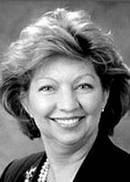forum
library
tutorial
contact

Hatcheries Can Help Rebuild
Naturally Spawning Salmon Runs
by Judi Danielson
The Idaho Statesman, June 3, 2004
|
the film forum library tutorial contact |

|
Hatcheries Can Help Rebuild
by Judi Danielson
|
 With all the recent hoopla about wild salmon and hatchery salmon, you may be surprised to learn that 80 percent of all salmon and steelhead in the Columbia River system are hatchery fish. That means that the record and near-record salmon and steelhead runs of the past several years, including the record runs into the Snake River and its tributaries, are primarily hatchery fish.
With all the recent hoopla about wild salmon and hatchery salmon, you may be surprised to learn that 80 percent of all salmon and steelhead in the Columbia River system are hatchery fish. That means that the record and near-record salmon and steelhead runs of the past several years, including the record runs into the Snake River and its tributaries, are primarily hatchery fish.
It's clear that hatcheries are successful at producing fish. Now it is time to take the next step and rethink how society uses hatcheries to meet goals for both abundance of fish and opportunities to harvest them.
Most Columbia and Snake river salmon return from the ocean in the fall, but with a change in emphasis at hatcheries and improvements in the habitat where salmon and steelhead spawn, we could harvest more fish in the spring and summer and improve the important genetic diversity of salmon and steelhead at the same time.
In this sense, the narrow focus of the recent debate over fish hatcheries and endangered species misses a critical point.
Properly used, hatcheries can be an effective and beneficial tool to boost the number and diversity of naturally spawning salmon and steelhead.
The current hatchery debate focuses narrowly on how to account for hatchery production in determining whether salmon and steelhead should be listed for protection under the Endangered Species Act.
Critics erroneously accuse NOAA Fisheries, the federal agency that implements the ESA for salmon and steelhead, of attempting to substitute hatchery fish for wild fish. NOAA maintains its new policy will emphasize conservation of naturally spawning salmon and their ecosystems.
That's the point critics are missing. Traditional hatchery practices are changing from a focus on mass production of salmon to primarily support commercial and sport fisheries to a broader focus that includes production to rebuild naturally spawning fish populations.
Using hatcheries to increase the number and distribution of salmon and steelhead will pay tremendous benefits to society over time — benefits that far outweigh the risks posed by hatchery produced fish. Most hatchery risks can be greatly reduced by using locally adapted broodstocks and releasing fish in the appropriate numbers to match habitat conditions.
The Northwest Power and Conservation Council, in coordination with fish and wildlife agencies, recently completed a massive report on all fish hatcheries in the Columbia River Basin. The Artificial Production Review and Evaluation, requested by Congress in 1997, is intended to provide recommendations for future hatchery operations. The council's recommendations, which we are finalizing at this time, will focus on changing the role of hatcheries to emphasize conservation and natural production of fish, regardless of whether they are listed for ESA protection.
Hatchery production of fish in the Columbia River Basin hasn't always been well-coordinated. Better hatchery coordination will be among the goals and objectives of the council's recommendations. This revised and better-coordinated role already is being implemented at some facilities, particularly those funded through the council's Columbia River Basin Fish and Wildlife Program. The goal is to increase both the diversity and abundance of the runs consistent with the ability of streams and habitat to support them. Without this careful intervention, the few remaining self-sustaining salmon and steelhead populations in the Columbia River Basin will continue to decline.
Used in this way, hatchery production is coordinated with improvements to spawning and rearing habitat so that fish raised in hatcheries are released into a suitable rearing environment. Until now, this work has been accomplished on a project-by-project basis.
In the future, it will be guided by planning documents for each individual subbasin of the Columbia River. These subbasin plans have been under development for nearly two years, and local entities such as watershed councils have led the way.
The plans, submitted to thecouncil May 28,will be amended into the council's fish and wildlife program later this year.
NOAA's new policy will help clarify the use of hatcheries as a tool to recover and rebuild naturally spawning salmon and steelhead runs.
With locally developed goals and objectives established in subbasin plans, the next step will be to decide where to focus that production.
learn more on topics covered in the film
see the video
read the script
learn the songs
discussion forum
